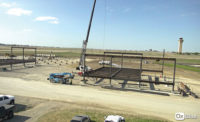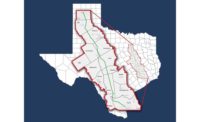

Driven by steady ridership growth, Dallas Area Rapid Transit is on a roll, using alternative project delivery methods and composite materials as it expands its light-rail system and upgrades its commuter rail.
DART opened the first 5.4 miles of the 14-mile Orange Line light-rail route in July five months early using design-build for the first time (see related story, ENR Texas & Louisiana, p. TX79). The opening came just weeks after Dallas hosted the American Public Transportation Association's annual rail conference.
Just 16 years after opening its first route, "we have 72 miles of light-rail transit, the longest in the United States," said Gary Thomas, DART president and executive director, at the conference. That will expand to 90 miles through 2014, and a related $8 billion will be generated in transit-oriented development, he added.
Austin Bridge & Road leads a team building a five-mile extension of the Blue Line in a $188-million design-build contract that also will be completed by year's end. DART employed the construction- manager/general-contractor delivery method for another major effort: the 28-mile, $1.8-billion Green Line connecting southeast and northwest Dallas, which launched in 2007 and was completed in three years. "We are looking at public-private partnerships now," Thomas noted at the June conference.
The agency also is planning to replace all the wooden ties on a heavy-rail line it oversees in conjunction with the Fort Worth Transportation Authority. Last year, it placed a $250,000 order with Axion International Holdings Inc. to replace with recycled-plastic ties some two miles of wooden ties on a bridge, says Tim McKay, DART executive vice president of growth and regional development.
Comparing it with another segment using concrete ballast, he says, the plastic ties are eight times lighter and easily replaceable and will save the equivalent of millions of plastic bottles in a landfill.
Freight railroads and a couple of other public transit agencies have used Axion's ties for about 10 years. Results show the ties are in as good shape as when they were placed, says Cory Burdick, an Axion representative. "When sitting in a landfill, plastic never degrades. We aimed to turn that into a positive."
DART did pilot projects with iterations of plastic ties over the past few years, and initial quality problems appear to have been solved, says McKay. "We will use these on future light-rail projects."





Post a comment to this article
Report Abusive Comment